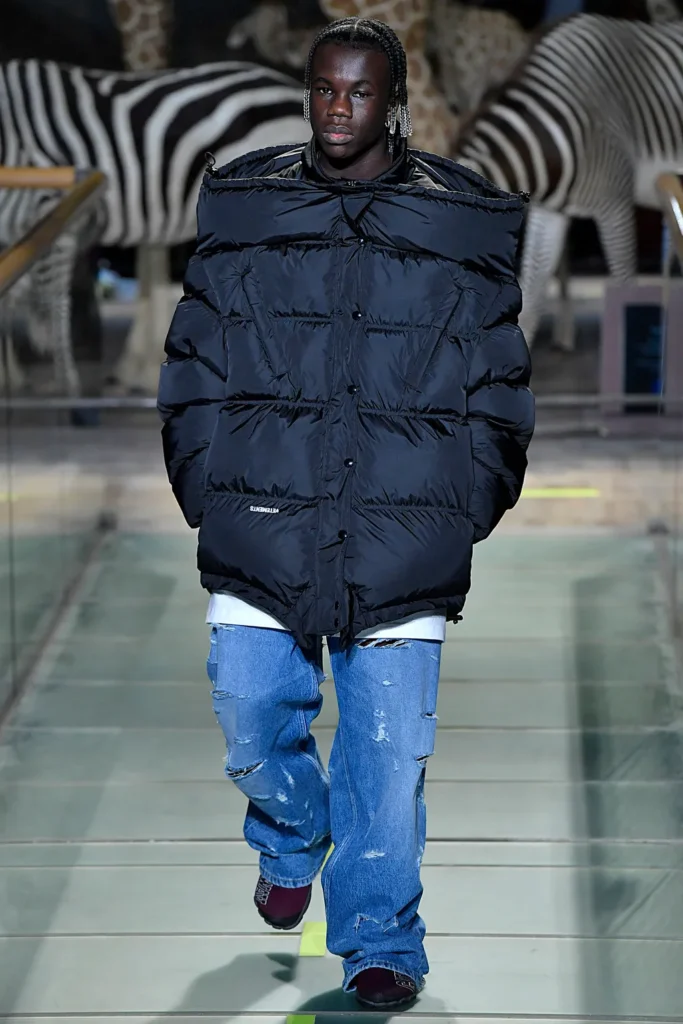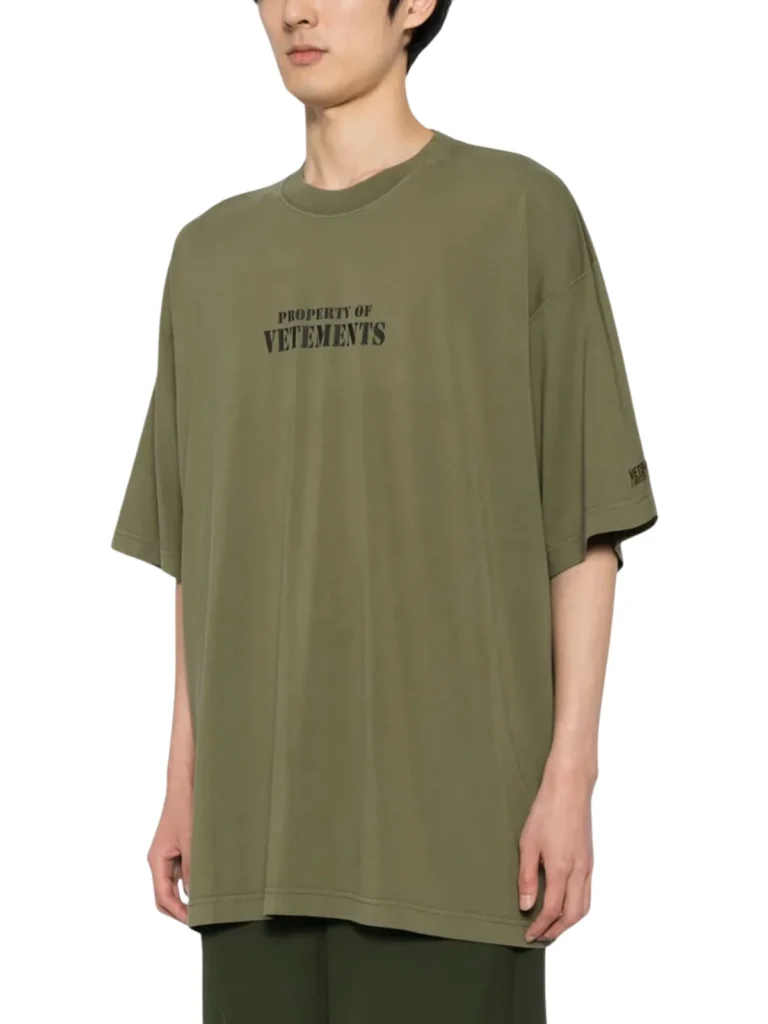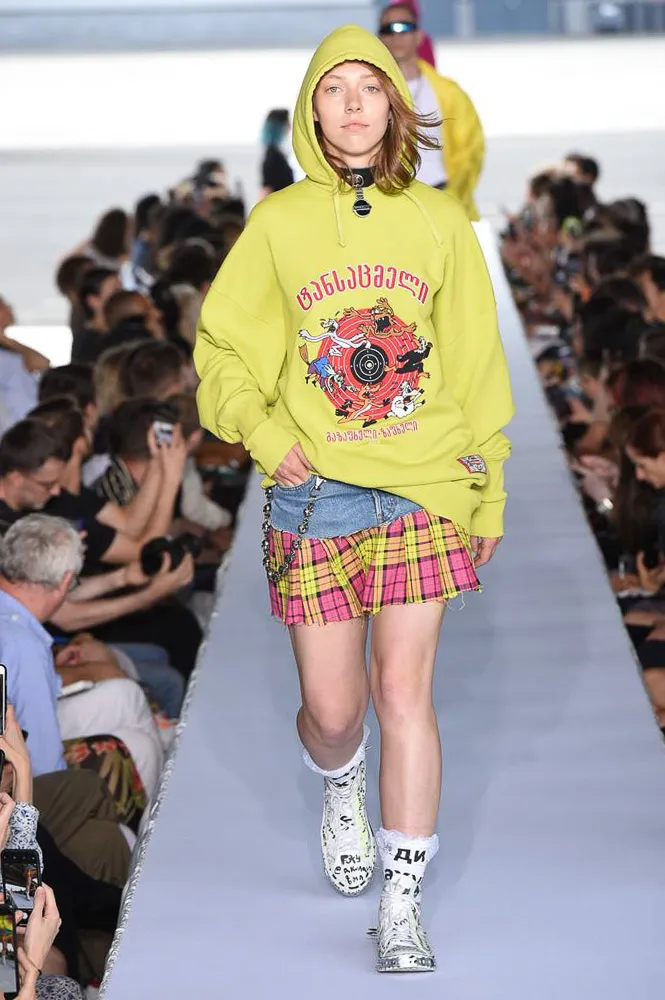Breaking Fashion’s Rules: How Vetements Redefined Luxury with Disruption and Authenticity

Breaking Fashion’s Rules: How Vetements Redefined Luxury with Disruption and Authenticity. Founded in 2014 by Georgian designer Demna Gvasalia and his brother Guram Gvasalia, Vetements quickly disrupted the fashion industry with its rebellious spirit, oversized silhouettes, and subversive commentary on consumer culture. Within just a few seasons, the brand became one of the most talked-about labels in high fashion. But behind the hype lies a deliberate strategy—a blend of authenticity, radical marketing, and industry defiance—that built Vetements into a global phenomenon.
The Anti-Fashion Approach That Caught the Industry Off Guard
Vetements launched at a time when fashion houses were still deeply entrenched in tradition. The brand’s first Paris Fashion Week show in 2014 featured anonymous models, gritty venues, and clothes that referenced streetwear, workwear, and counterculture more than couture. Instead of setting trends, Vetements questioned them.
Demna Gvasalia’s early design choices—oversized outerwear, DHL-branded T-shirts, and deconstructed garments—were not accidental provocations. They were sharp commentaries on consumerism, status symbols, and the absurdities of fashion cycles. This authenticity resonated, especially with younger audiences and industry insiders looking for something raw and unfiltered.

The Power of Scarcity and Limited Drops
From the beginning, Vetements adopted a scarcity model. Instead of overproducing collections, it released limited quantities through carefully chosen stockists. This created an air of exclusivity and urgency. The DHL T-shirt, for example, was priced at over $300 and sold out rapidly, not because of its design complexity, but because of its ironic boldness and limited availability
.This approach not only drove up demand but also positioned the brand as anti-mainstream—even as it became one of the most copied and coveted labels in the industry.
Strategic Collaborations as Cultural Statements
Vetements made headlines with unexpected collaborations—from partnering with Levi’s and Reebok to working with brands like Juicy Couture and Champion. These partnerships weren’t about commercial appeal alone. They were cultural commentaries, merging high fashion with everyday brands in a way that blurred the lines between luxury and mass-market.
Each collaboration reinforced the brand’s ethos: that fashion could be democratic, ironic, and layered with meaning. It also gave Vetements access to new consumer segments while maintaining its avant-garde identity.

Guerrilla Marketing and Mystery as Strategy
Vetements has never relied on traditional marketing. Its runway shows have taken place in unconventional settings like Parisian sex clubs and McDonald’s, and casting choices have included people from outside the modeling world. These elements weren’t gimmicks; they were statements that extended the brand’s narrative.
Moreover, Vetements has thrived on mystique. The Gvasalia brothers rarely gave interviews in the early years, and the brand’s initial anonymity created buzz in a media landscape obsessed with access. This silence fueled intrigue and cultivated an organic following.
Navigating Change: Demna’s Exit and the Brand’s Continuation
In 2019, Demna Gvasalia stepped down from Vetements to focus on his role at Balenciaga. This was a pivotal moment. Many questioned whether the brand could maintain relevance without its most recognizable creative force.
However, under Guram Gvasalia’s leadership as CEO and creative director, Vetements has continued to evolve. New collections introduced under Guram have remained true to the brand’s DNA while pushing its aesthetic into new, sharper territories. This transition showcased the resilience of Vetements as a brand built on ideas, not just personalities.

Lessons for Aspiring Entrepreneurs
- Authenticity Attracts Attention: Vetements’ rise was rooted in being unapologetically authentic. Aspiring entrepreneurs should lead with what they believe in, not what the market expects.
- Scarcity Builds Desire: The limited drop model can turn a niche product into a cult item. Controlled supply can increase perceived value and create natural demand.
- Partnerships Can Challenge Norms: Collaborations don’t have to be conventional. Vetements turned brand partnerships into cultural statements, expanding reach without compromising identity.
- Mystery is a Marketing Tool: In a saturated market, saying less can sometimes say more. Letting the product and experience speak builds organic curiosity.
- Resilience Requires Vision Beyond a Single Leader: Vetements survived a key founder’s departure because its vision was shared and strong. Build brands around ideas, not individuals.
Conclusion
Vetements didn’t succeed by fitting into fashion’s existing frameworks—it tore them down and rebuilt them with irony, intellect, and bold design. Its story is a case study in turning authenticity into influence and disruption into legacy. For entrepreneurs across industries, Vetements offers a powerful reminder: rules are tools, and sometimes, breaking them is the smartest strategy of all.




